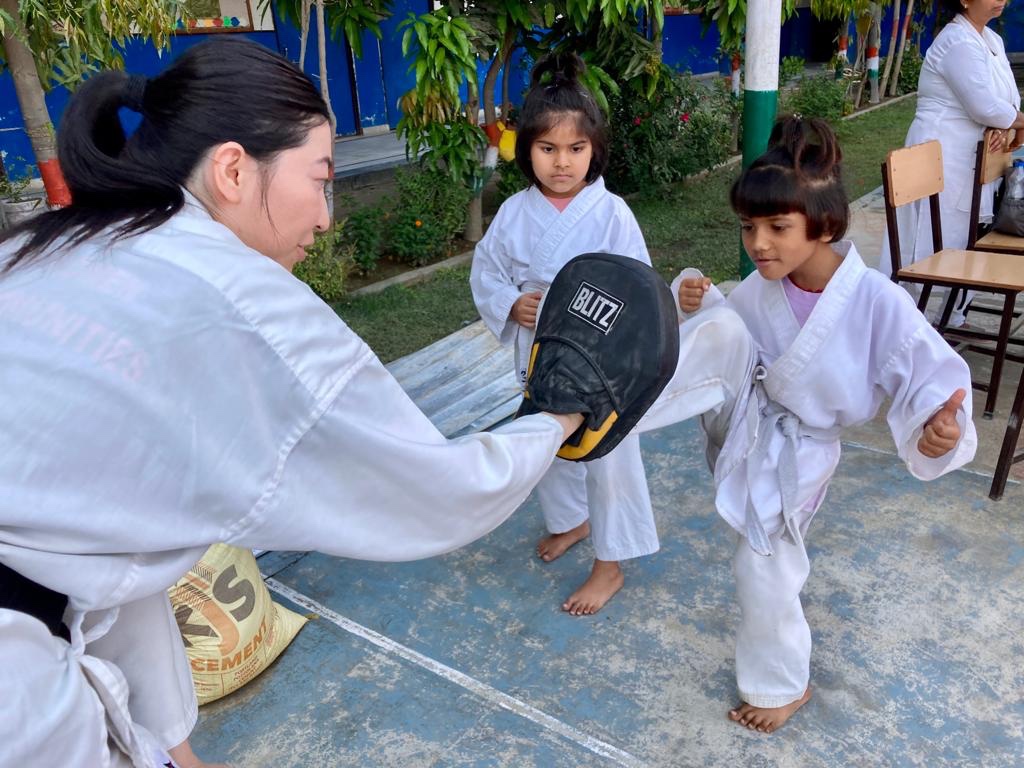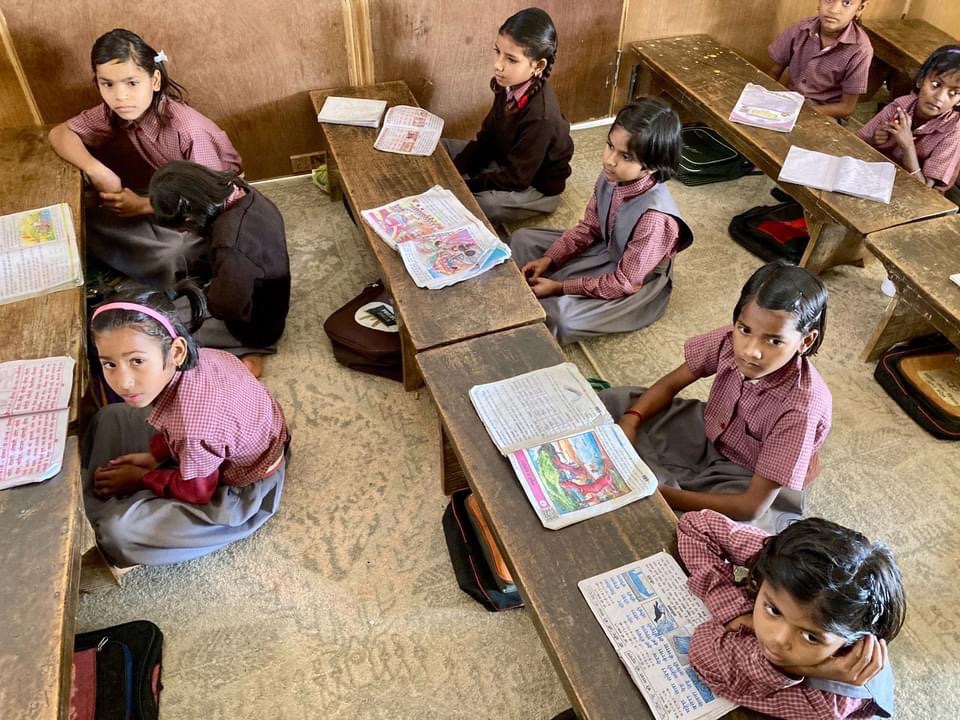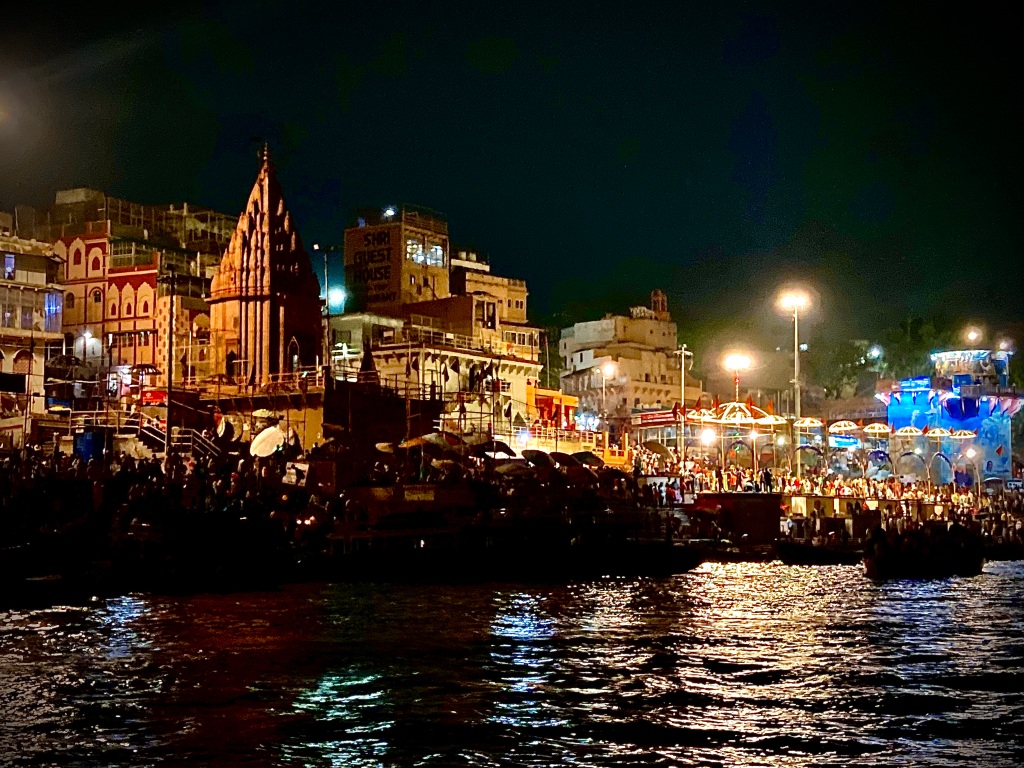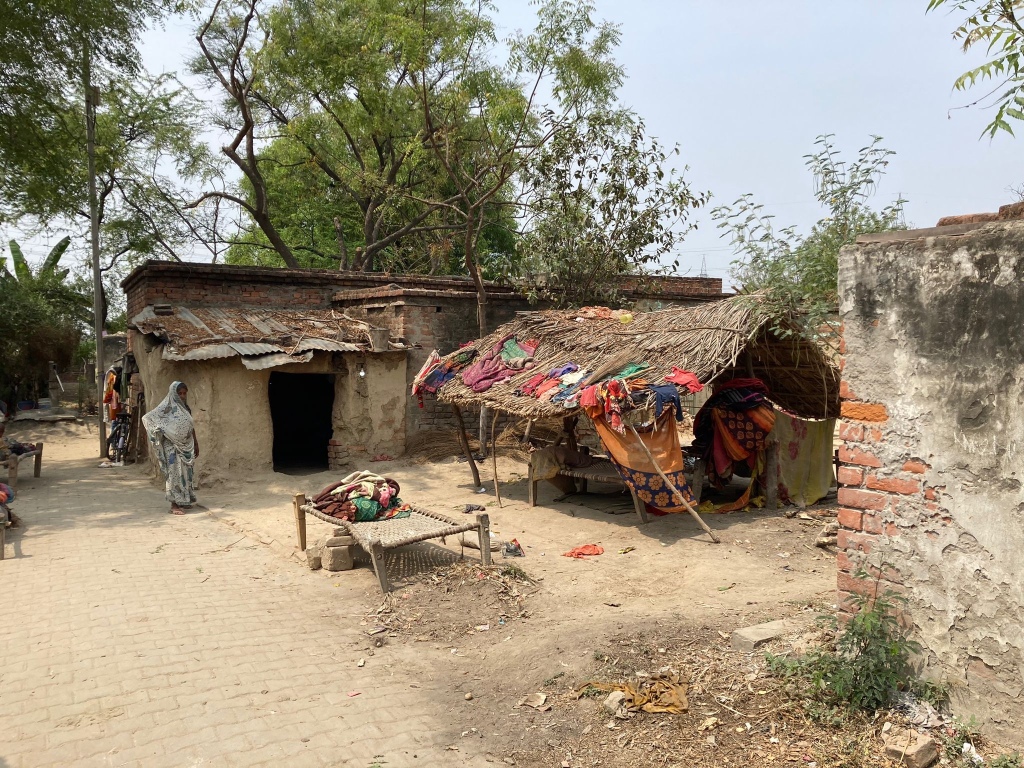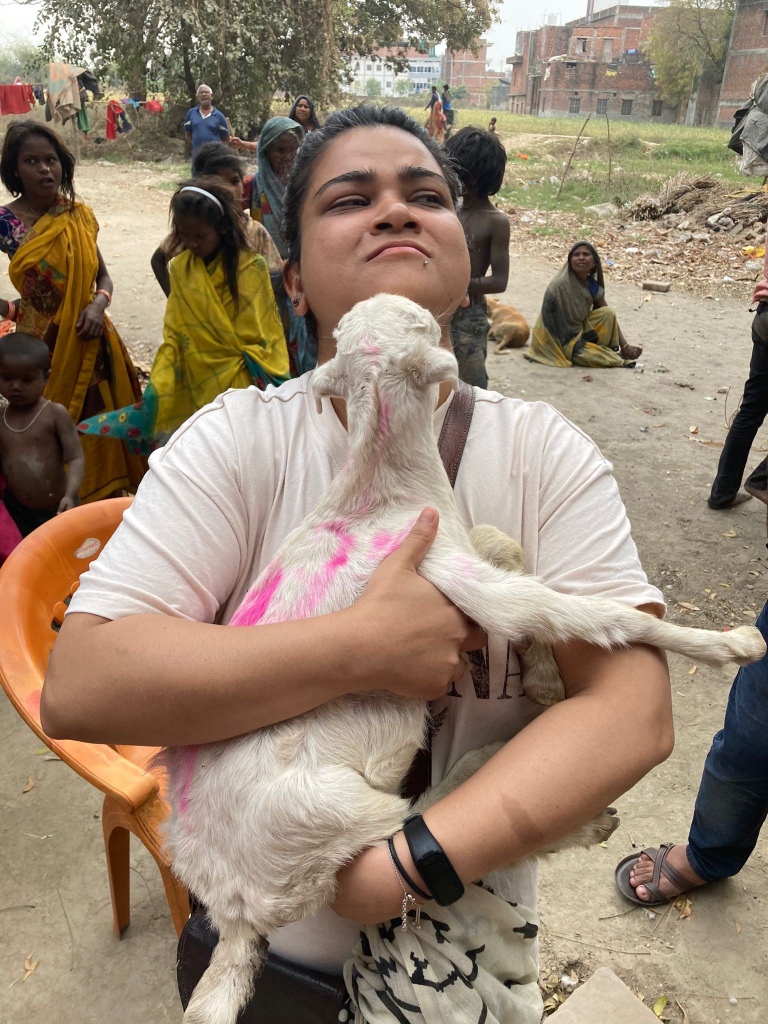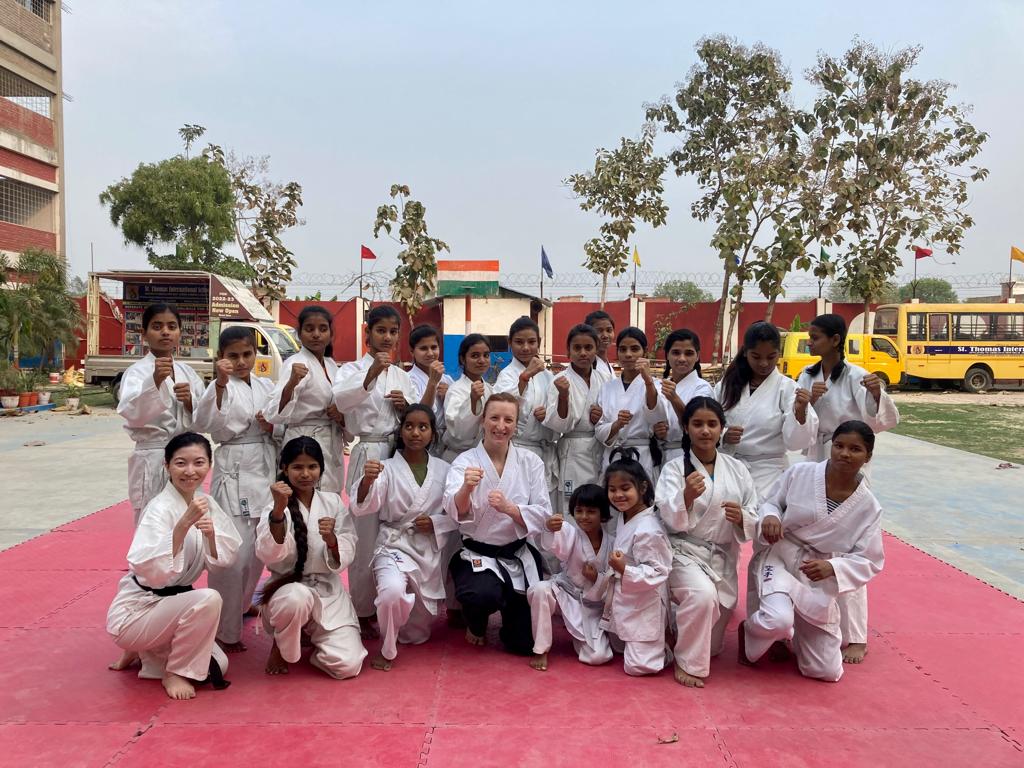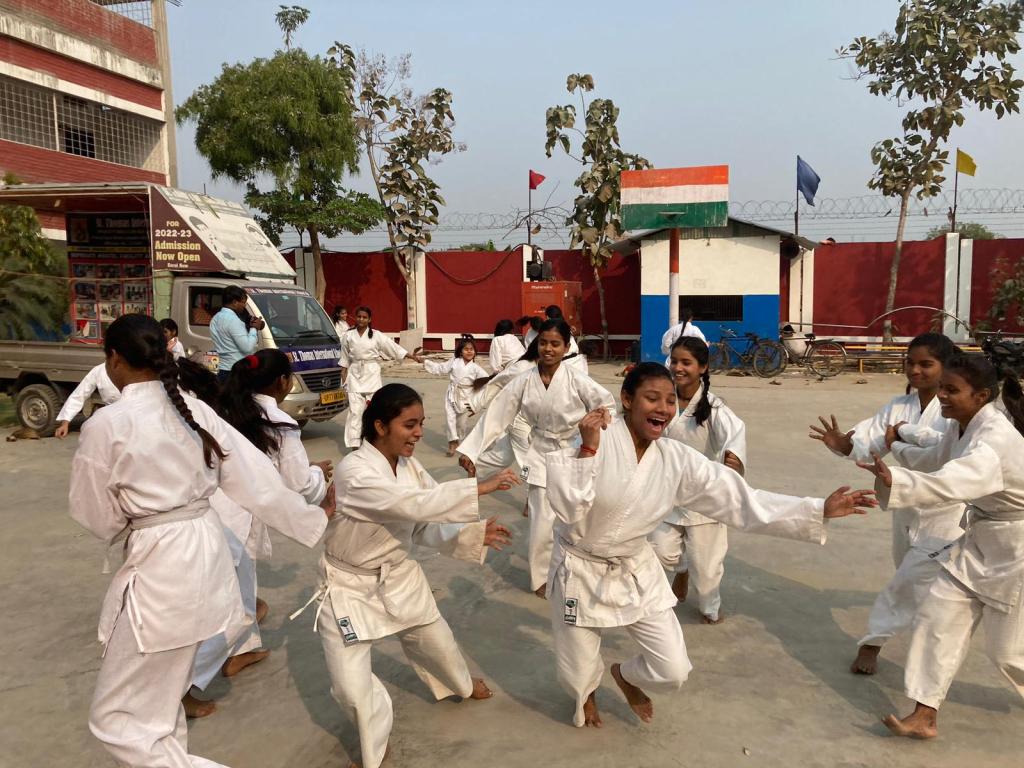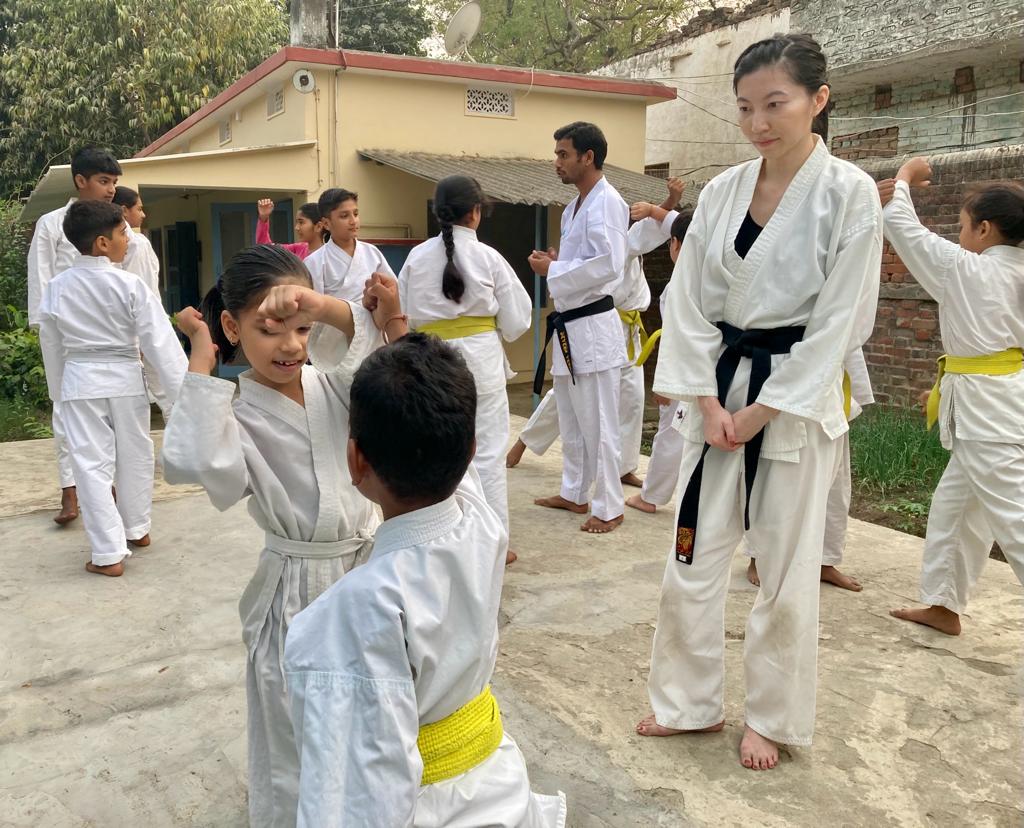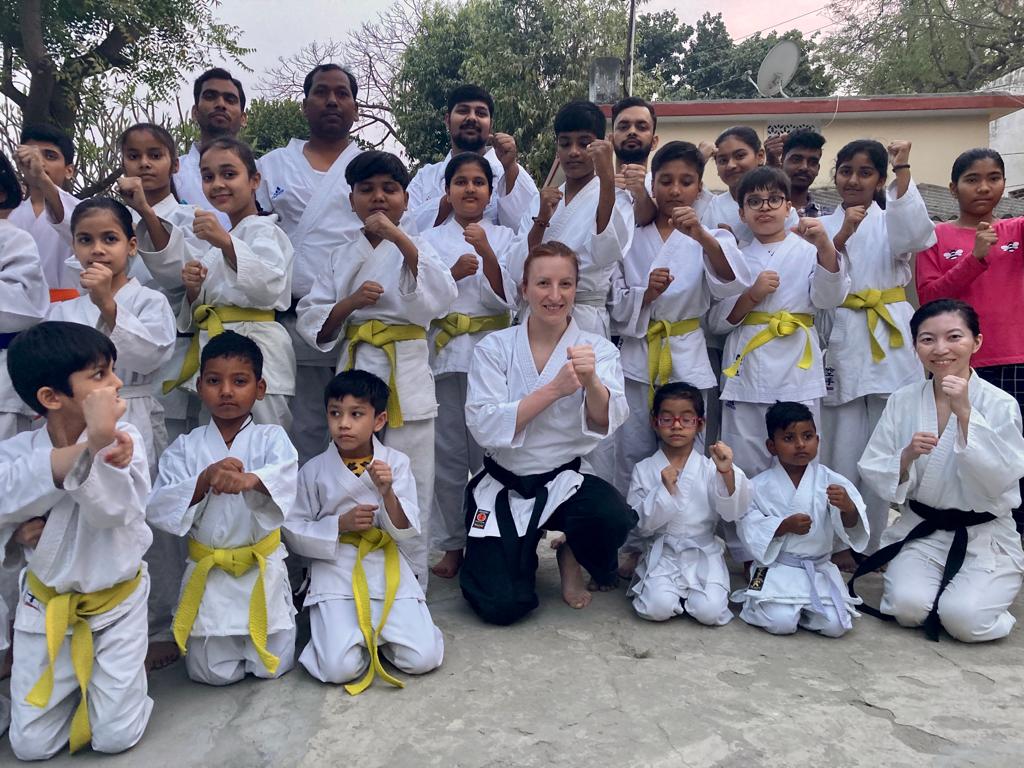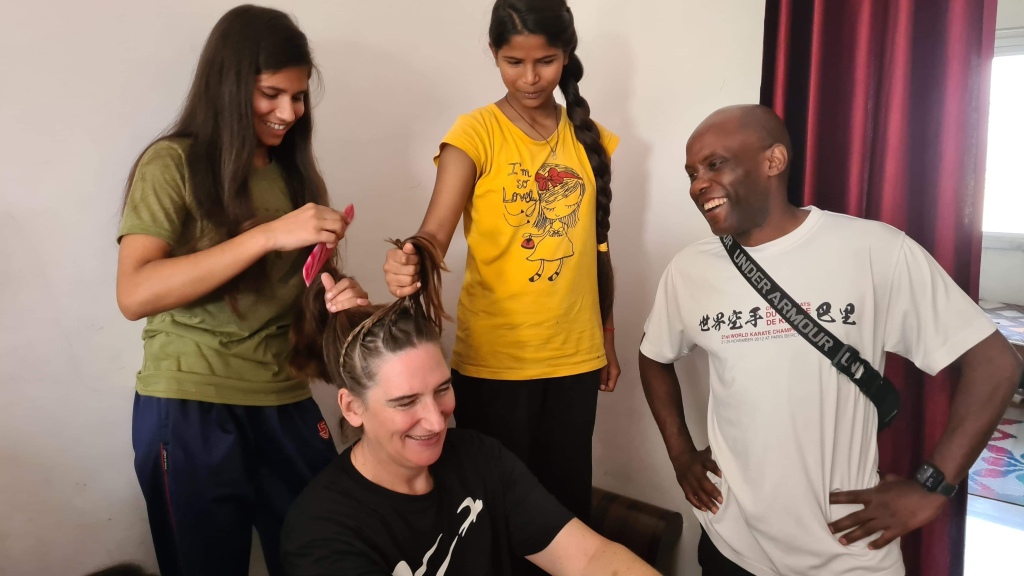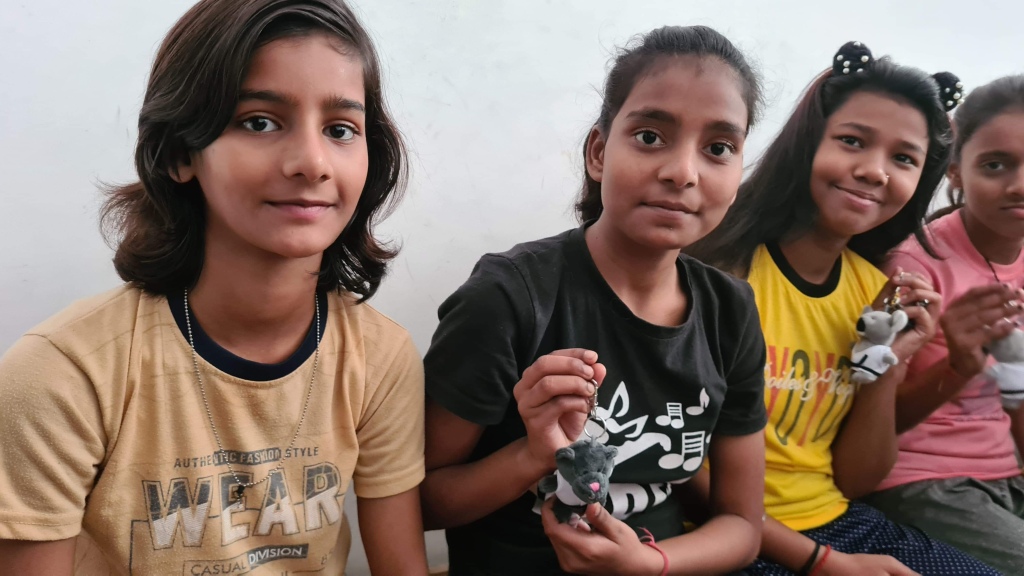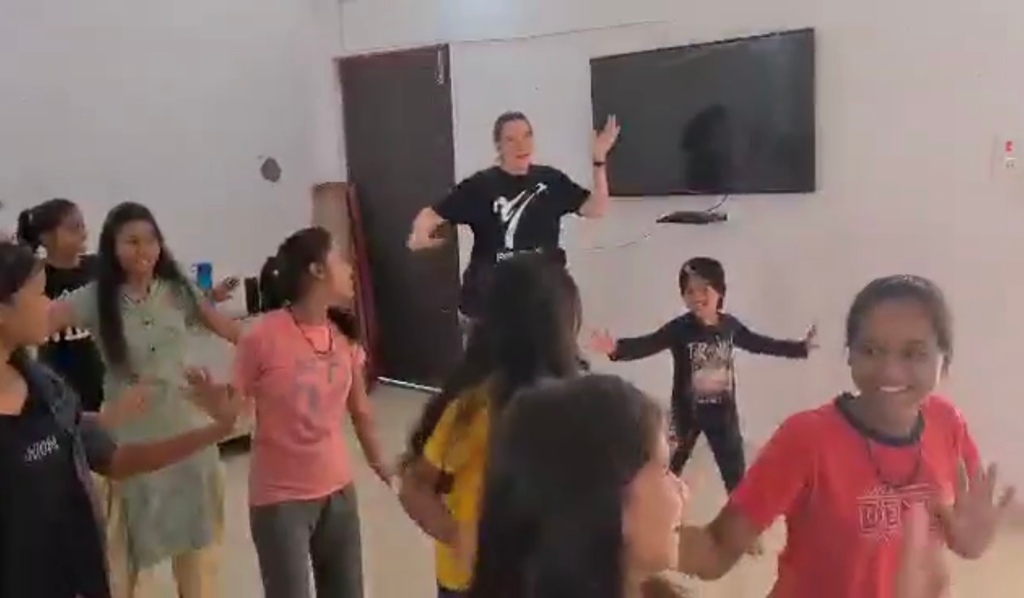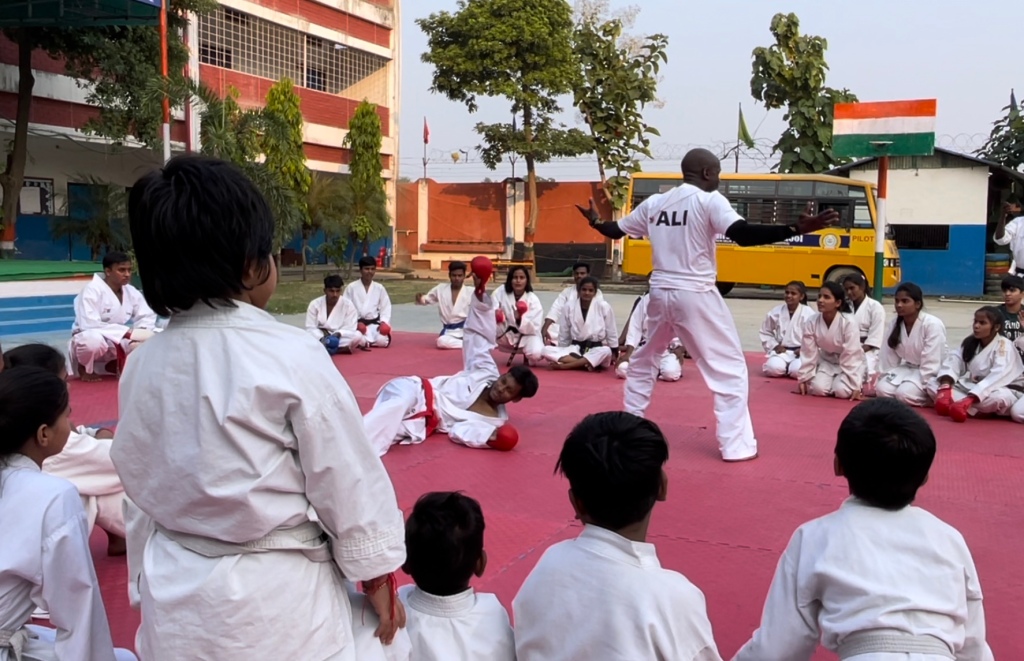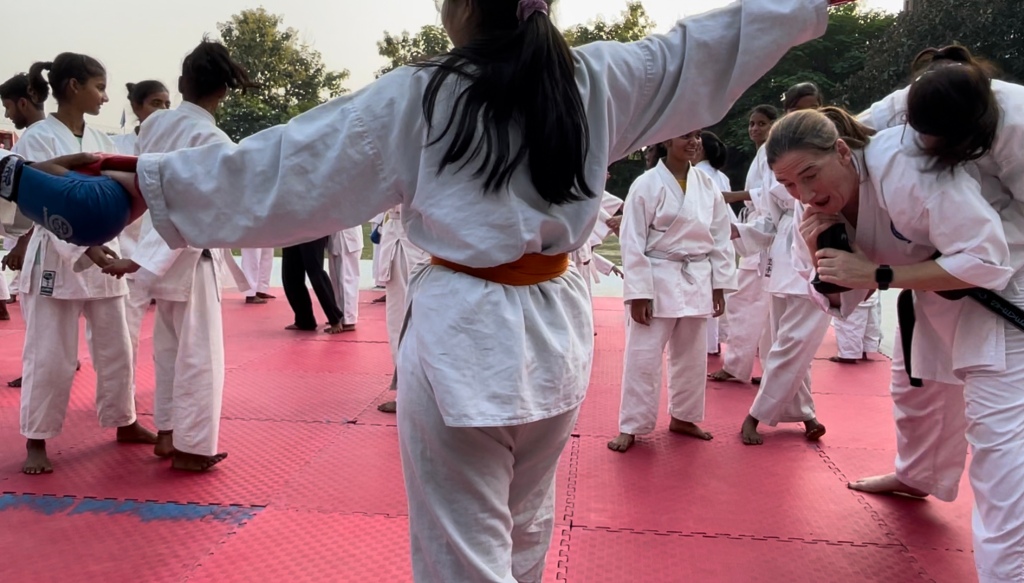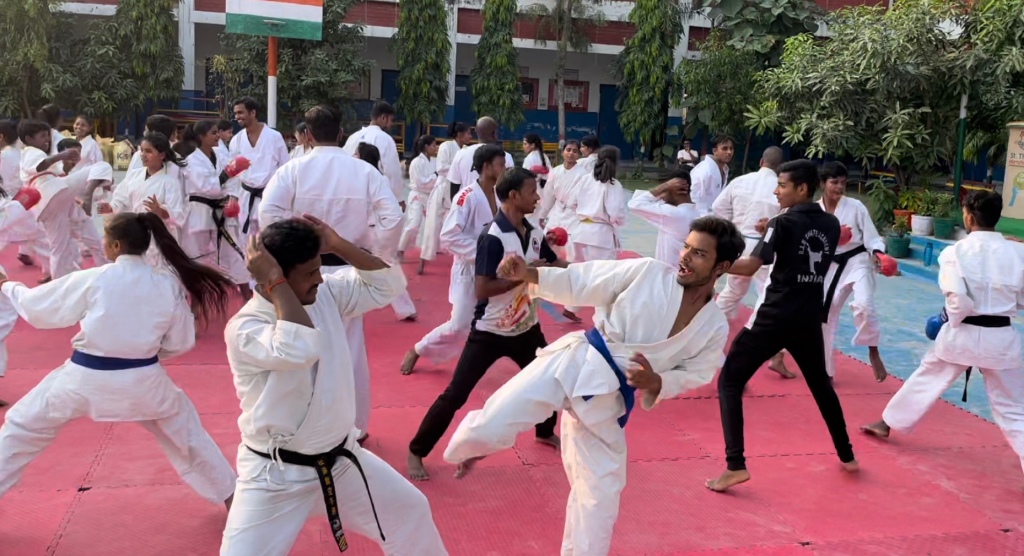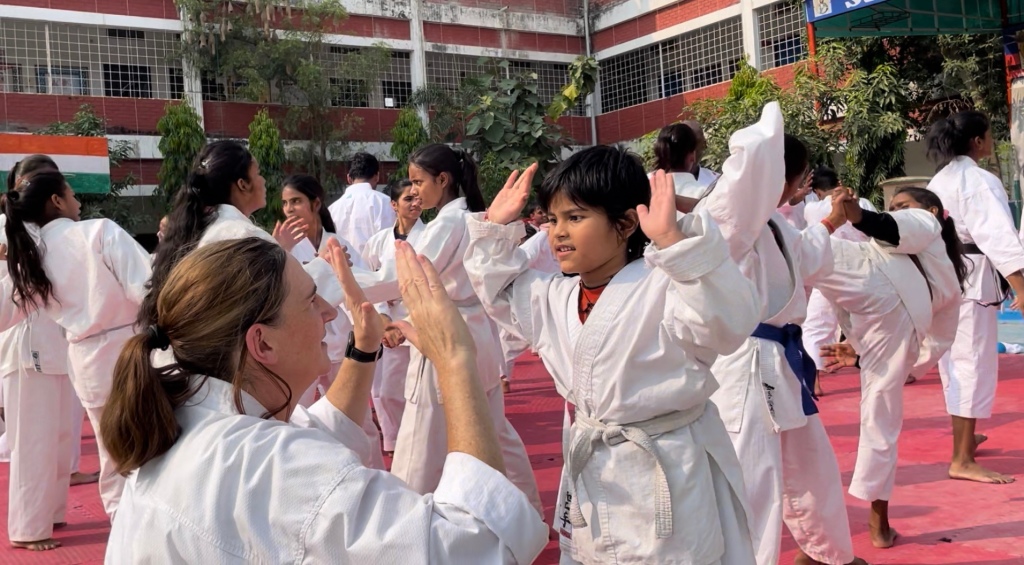Update: Ginie and I are alive and…well, alive. We’re both home now and just when we thought we were in the clear, COVID struck and typhoid struck again harder (we really do not recommend these as souvenirs). Anyway, we’re slowly returning to the Land of the Living, so here’s our last post from the trip!
Last Thursday, it was finally time for Ginie and I to leave Varanasi, but we made sure to visit the Disha girls one last time before we flew out.
When we arrived at Saint Thomas, the girls welcomed us with open arms as always. We originally planned to stay until noon, but ended up spending a couple more hours there, and we sure made the most of it! There was origami, drawing, dancing, nail painting (the girls made sure I couldn’t leave India without another set of sparkly nails) and, of course, putting a beautiful silk saree on Ginie – a kind gift from Anjali and the girls.

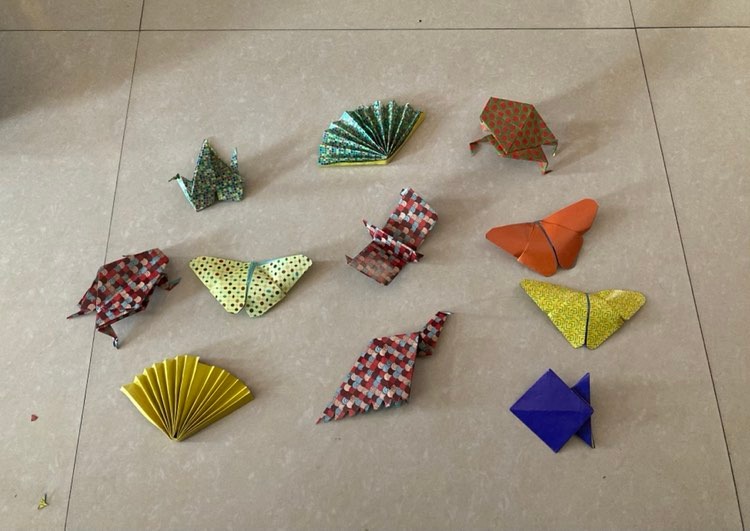



When it was time for us to leave, we made sure every girl got a hug and headed out to the car together. As a final parting gift, the girls decorated our hair with roses from the yard and waved at us as we left Saint Thomas.
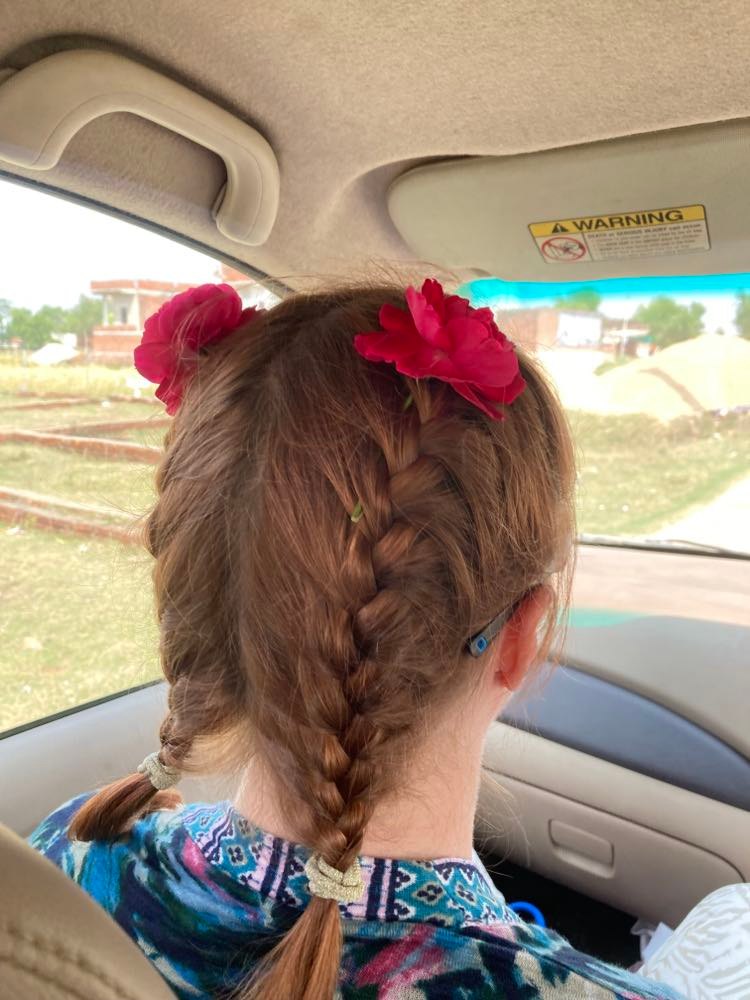
Then it was one final lunch with Elisabeth and Jean Max from Act & Help, before we fetched our bags and headed to the airport.
It’s amazing the relationships you can build in just a week. I wasn’t sure what to expect from my first outreach visit, but I could only hope to have met and learned from so many fantastic people. It’s one thing to tell their stories online, it’s another to actually come to know them – to turn names, places, words and photos into something real and something that you come back to time and time again.

And with that, I wrap up this blog series with some important thank you’s to:
Uday for being the most generous and hospitable host, who did everything he could to take care of us and help us get where we needed to go.
Moyee for being our trusted translator, always looking out for us and making sure we had everything we needed.
The Disha girls, Devesh and Pankaj for many great trainings and fun memories.
Sensei Sohan for welcoming us at his dojo.
Ajay and Sushmita from Red Brigade Trust for travelling all the way from Lucknow to meet us, and Ajay for opening our eyes to the situation of Muhasar communities in Varanasi.
Mukesh from Project Mala for meeting with us and taking the time to show us around their schools.
Elisabeth from Act & Help and her husband, Jean Max, for many interesting discussions about our projects and for treating us to lunch.






